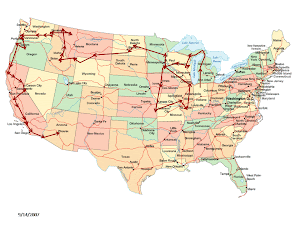 They call this the haystack. It is over 200 feet high and was made when a volcano pressed it up out of the water.
They call this the haystack. It is over 200 feet high and was made when a volcano pressed it up out of the water. The Octopus Tree
The Octopus Tree Beautiful Coastline
Beautiful Coastline Powerful waves make for a majestic view.
Powerful waves make for a majestic view. This is a picture of a Coast Guard boat doing it's thing. These boats are so tough it is amazing! The people who man the boats are incredibly brave. They are called on to go out in the roughest seas and rescue people. In the museum display they had mannequins on the real boat and they were strapped on board. Even the pilot was strapped so he couldn't fall out.
This is a picture of a Coast Guard boat doing it's thing. These boats are so tough it is amazing! The people who man the boats are incredibly brave. They are called on to go out in the roughest seas and rescue people. In the museum display they had mannequins on the real boat and they were strapped on board. Even the pilot was strapped so he couldn't fall out.We have been here at Astoria for a week now and will be leaving today and moving to the Portland, Oregon area. It is only about 100 miles. I get excited about moving on and anticipate learning about the next location and sometimes wake up early. I awoke at 1:30 and decided to come and write as I can’t sleep. I’ll go back to bed around 4 or 5 and sleep a little more. We have taken the car on trips up the coast of Washington and down the coast of Oregon. Northwest Washington and the Seattle area will have to be another trip. Yesterday we traveled down the Oregon coast south and back and saw a lot of pretty scenery. We stopped and saw the ‘Octopus Tree’ at cape Mears and that is 60’ around and some of the limbs stretch out horizontal 30’ before turning upward. Here’s a little info on the tree.
LEGEND OF THE OCTOPUS TREE AT CAPE MEARES STATE SCENIC VIEWPOINT
SITKA SPRUCE - (PICEA SITCHENSIS)
Tradition handed down by the Indians is that the eerie giant is a burial tree shaped when it was young to hold canoes of a chief's family. Such deeply-rooted lore passed from generation to generation is likely to be founded on truth, and Indian history of the area will corroborate it.
Archaeologists have found evidence that Indians lived along these shores for 3,000 years. The tribes in this area for generations back through the dim past placed their dead in the trees in canoes. But the trees had to be prepared to hold them. Branches of a forest tree normally reach straight upward, toward the light, but those on a burial tree were forced, when pliable, into a horizontal position beyond which they grew upward. Once the pattern was set, the tree might grow to a great size but always kept the shape, as did the Octopus Tree.
Burial trees (the oldest trees) for many years could be spotted here and there in the virgin forest. The Octopus Tree (which the Indians revered and called The Council Tree) is more than 60 feet at its base. No one can tell its age without counting the rings. Some theorize it could have been a young tree at about the time of Christ. No matter what the actual age of the tree may be, a visit to the prehistoric tree of mystery is truly an enjoyable visit.
The Columbia River Bar again. I keep thinking about the power of the bar in the Columbia River. A few things I remembered are that our pilot Joe said there are times when the Coast Guard will not let you into the river until it has calmed down. You have to stay in the ocean until it is safe. Another thing we learned at the museum is that the biggest mistake you can make is to start a boat into the bar at the wrong time. The bar can change in 5 minutes. I have also been thinking of the comparison of the bar to a water hose under pressure. Imagine millions of gallons being pressurized into a huge hose and then trying to maneuver a boat through it. The power of it is just awesome!


No comments:
Post a Comment